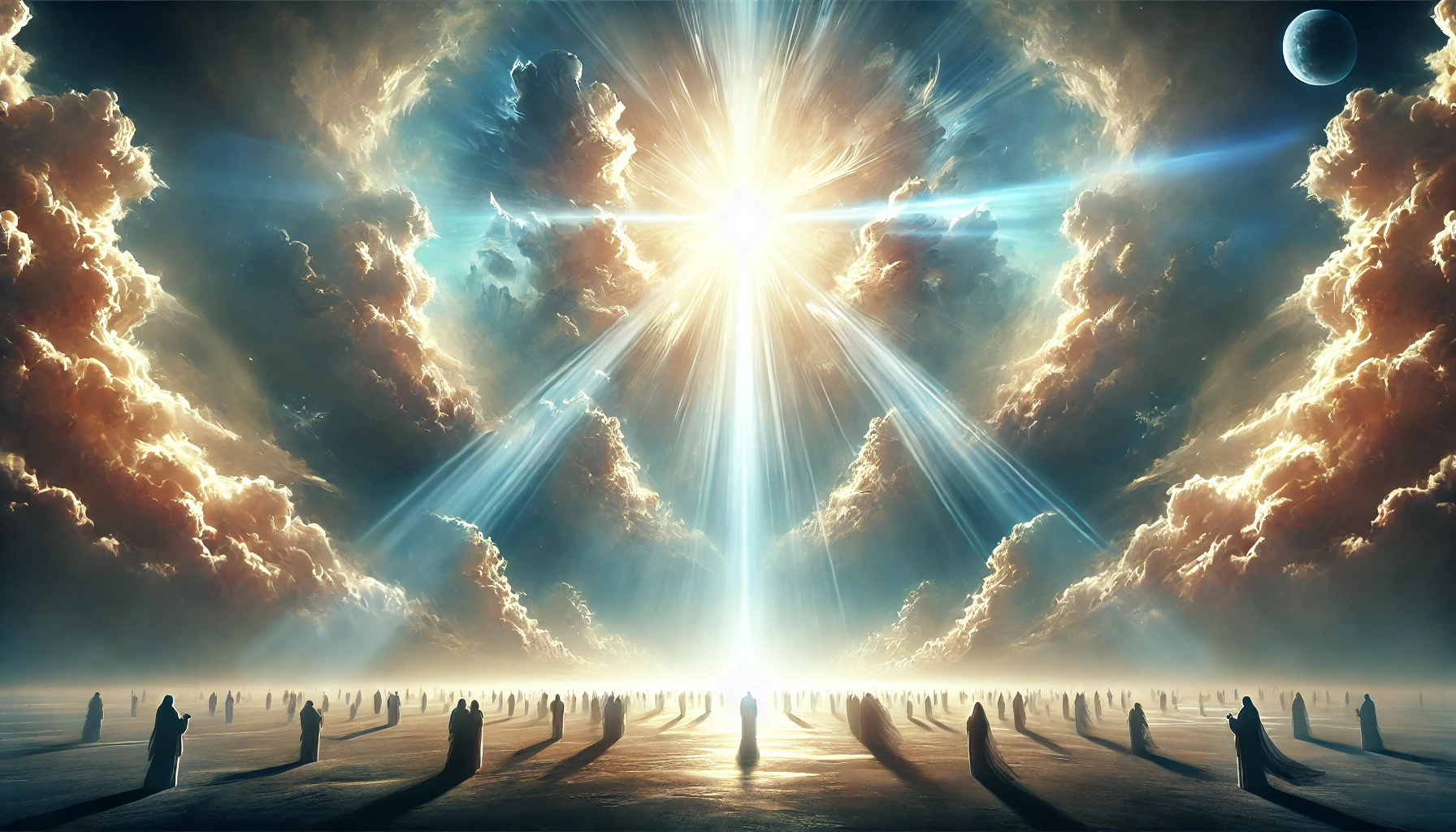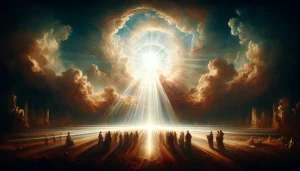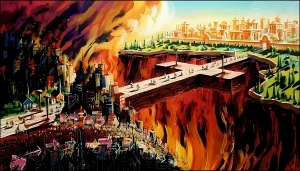Language
τὸ φῶς (the light )- John 9:5, “As long as I am in the world, I am the light of the world.”
ἐν τῇ σκοτίᾳ (in the darkness )- John 12:46, “I have come into the world as
light , so that whoever believes in me may not remain in darkness.” - 1 John 1:5b, “God is
light , and in him is no darkness at all.”
- John 12:46, “I have come into the world as
φαίνει (shine )- 1 John 2:8b, “The
darkness is passing away and the truelight is already shining.” - Revelation 21:23, “And the city has no need of sun or moon to shine on it, for the glory of God gives it
light , and its lamp is the Lamb.”
- 1 John 2:8b, “The
οὐ κατέλαβεν (has not overcome )καταλαμβάνω (to seize, to grasp, to comprehend). “Darkness is not able to overcome or conquer the light. Just as a single candle can overcome a room filled with darkness, so also the powers of darkness are overcome by the person and work of the Son through his death on the cross” (MacArthur Study Bible).- 1 Thessalonians 5:4, “But you are not in
darkness , brothers, for that day to surprise (overtake) you like a thief.”
- 1 Thessalonians 5:4, “But you are not in
τὸ φῶς (the light )φαίνει (shine )οὐ κατέλαβεν (has not overcome )
Translations ofκατέλαβεν “
Overcome ” (ESV, NIV, HCSB)
This term best captures the idea of a spiritual victory or struggle, where the darkness tries but fails to prevail over the light. It aligns with the overall theme of John’s Gospel, which emphasizes the triumph of Christ (the Light) over evil (the darkness).“
Overtake ” (LSB)
This translation highlights the pursuit, where darkness tries but fails to catch or surpass the light. It emphasizes more on the chase.“
Overpower ” (NASB note)
This translation suggests a forceful conflict, where darkness attempts to dominate or control the light but ultimately fails. It emphasizes more on the intensity of the conflict.“
Grasp ” (NASB)
This translation can refer either to physically seizing something or mentally grasping a concept. It can work in both senses: the darkness cannot seize the light or mentally “comprehend” it.“
Comprehend ” (KJV, NKJV)
This can mean to mentally “grasp” or understand. This translation suggests that the darkness is unable to understand or perceive the light, which aligns with the idea of spiritual ignorance or blindness.
“did not overcome” or “has not overcome”?The Greek
κατέλαβεν (overcome) is in the aorist tense, which typically indicates a completed action in the past, viewed as a whole event. Therefore, many English translations use simple past tense. However, while the aorist itself focuses on the completeness or definitiveness of the action, the implications of that action can still carry ongoing effects, depending on the context.
In John 1:5, the emphasis is on the fact that darkness once and for all failed to overpower the light. The action is complete—darkness definitively failed at some point—but the result of that failure persists. This can be expressed in English using the present perfect (“has not overcome”) to capture the idea that the past failure of darkness still holds true today.
Insights
- The Light Shone in Nature and in the Old Testament
- Matthew Henry: “The discovery of the eternal Word to the lapsed world, even before he was manifested in the flesh: The light shineth in darkness…He that had commanded the light of this world to shine out of darkness was himself long a light shining in darkness.”
- Humanity’s Inability to Comprehend the Light
- John Calvin: “The statement that the light shineth in darkness is not at all intended for the commendation of depraved nature, but rather for taking away every excuse for ignorance.”
- The Necessity of Christ’s Coming
- John Calvin: “Hence it follows that there is no hope of the salvation of men, unless God grant new aid; for though the Son of God sheds his light upon them, they are so dull that they do not comprehend whence that light proceeds, but are carried away by foolish and wicked imaginations to absolute madness.”
Cross-References
- Isaiah 9:2, “The people who walked in darkness have seen a great light; those who dwelt in a land of deep darkness, on them has light shone.”
- This prophecy points to Christ as the light breaking through darkness, mirroring John 1:5 where the light shines despite the presence of darkness.
- John 12:46, “I have come into the world as light, so that whoever believes in me may not remain in darkness.”
- Jesus reiterates His role as the light in the world, paralleling John 1:5, where His light is shown to be more powerful than any darkness, symbolizing salvation and truth.
- Ephesians 5:8, “For at one time you were darkness, but now you are light in the Lord. Walk as children of light.”
- Paul’s message echoes the transformation highlighted in John 1:5—once in darkness, but now through Christ, believers become light, reflecting His victory over darkness.
- 1 John 2:8, “At the same time, it is a new commandment that I am writing to you, which is true in him and in you, because the darkness is passing away and the true light is already shining.”
- This verse mirrors John 1:5’s assurance that Christ’s light cannot be extinguished by darkness, symbolizing the ongoing triumph of truth over sin and evil.
- John 3:19, “And this is the judgment: the light has come into the world, and people loved the darkness rather than the light because their works were evil.”
- John 3:19 reveals the human response to the light mentioned in John 1:5, showing that while the light shines, many choose darkness due to their attachment to sinful deeds.
Tri-Perspectivalism
- The Light of Christ Overcomes Darkness – John 1:5 reveals the normative truth that the light, which is Christ, shines in the darkness, and the darkness cannot overcome it. This aligns with the biblical doctrine of Christ’s sovereignty over sin and evil. God’s Word shows that, despite the presence of sin and opposition in the world, Christ’s light will always prevail (cf. Isaiah 9:2The people who walked in darkness have seen a great light; those who dwelt in a land of deep darkness, on them has light shone. (Isaiah 9:2); 1 John 1:5This is the message we have heard from him and proclaim to you, that God is light, and in him is no darkness at all. (1 John 1:5)).
- The Conflict Between Light and Darkness – The situation described in John 1:5 depicts the ongoing conflict between light and darkness. The light represents Christ, who brings truth and salvation, while the darkness represents sin and spiritual blindness. This reminds us that the world is in a state of spiritual warfare, but no matter how fierce the darkness seems, it is powerless against the light of Christ (cf. Ephesians 6:12For we do not wrestle against flesh and blood, but against the rulers, against the authorities, against the cosmic powers over this present darkness, against the spiritual forces of evil in the heavenly places. (Ephesians 6:12); Colossians 1:13He has delivered us from the domain of darkness and transferred us to the kingdom of his beloved Son. (Colossians 1:13)).
- Christ’s Light in Our Lives – John 1:5 provides comfort to the believer’s heart, assuring that no matter the darkness we face, Christ’s light within us will never be extinguished. We are called to walk in the light of Christ, finding strength and hope in His victory over sin and death. This gives us confidence to live as children of light, reflecting His light in the world (cf. John 8:12Again Jesus spoke to them, saying, “I am the light of the world. Whoever follows me will not walk in darkness, but will have the light of life.” (John 8:12); Ephesians 5:8For at one time you were darkness, but now you are light in the Lord. Walk as children of light. (Ephesians 5:8)).
Illustrations
Applications
FAQ




